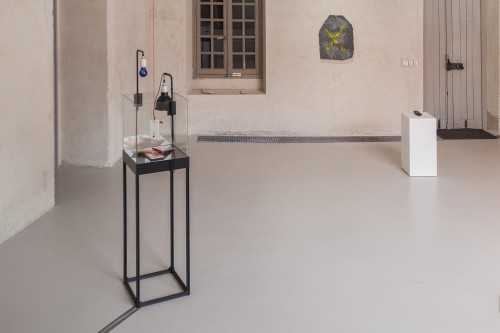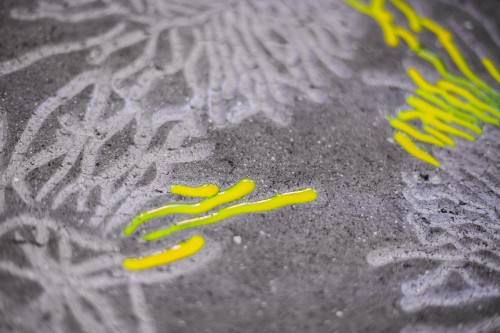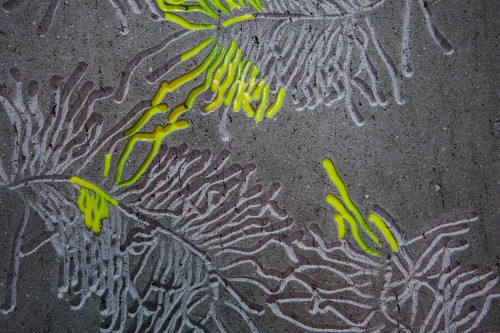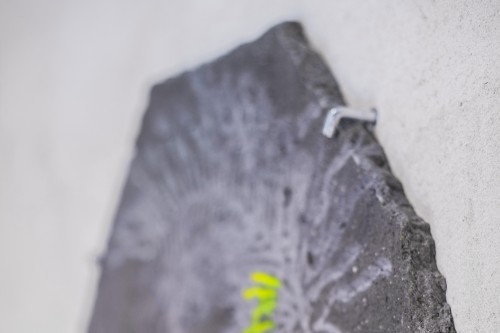Codex Bostrychus
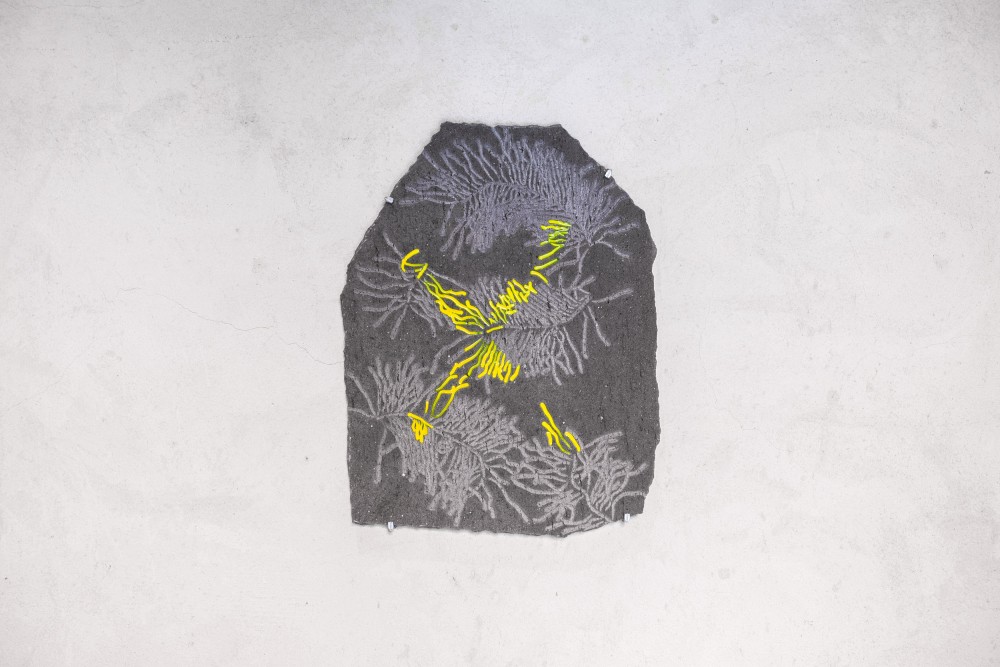
Date
Dimensions
Material
Description
Codex Bostrychus freezes in stone the fleeting language etched by the bostrychus typographus beneath the bark of trees. Situated between natural aesthetics and human intervention, the work explores the convergence of biology, technology, and memory.
As climate change accelerates the spread of this insect across Europe, the piece reflects on its ecological impact and its evolving relationship with forest ecosystems.
The artists began by collecting fragments of beetle-etched bark from Jura woodlands, photographing these organic motifs as a basis for a process of digital translation. From this visual archive, they developed a custom vector drawing program, allowing them to manually retrace the beetles’ intricate pathways using printed templates and a digital tablet.
These tracings were recorded and analyzed to feed an algorithm developed by the artist trio. This system generated visual syntheses of the beetles’ patterns, categorized by species and geographic region.
The resulting galleries were then CNC-milled into a monolithic stone stele, preserving these ephemeral traces in a material built to last. At the heart of this dense, organic network lies a fluorescent yellow cross—both a symbol of the resin trees emit in a final act of defense, and a reference to the marks made by forest wardens to signal infested trees marked for removal.
Through this gesture, Codex Bostrychus preserves an organic memory in stone and offers a layered reading of natural processes and human translation. Oscillating between archive and abstraction, disappearance and persistence, the work invites us to reconsider how we perceive, interpret, and conserve the imprints of life in the age of the Anthropocene.
Exhibition view at La Maréchalerie, Versailles

